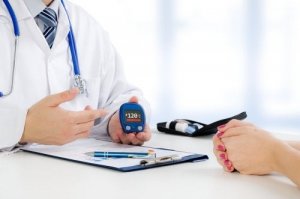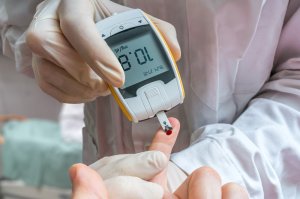Simple Sugars: What's the Function of Glucose?

Everyone’s heard of glucose, one of the main simple sugars, even if it’s only in the context of diabetes. However, very few people know the characteristics of this molecule and its role in the human body.
Glucose is the main source of energy for our body cells, so it’s vital. That is, it’s the nutrient that provides that with the energy they require to perform all their functions. This simple sugar occurs naturally in fruit and vegetables, and it also occurs as a part of larger molecules or polysaccharides. The best-known ones are starch and glycogen, usually present in rice, meat, and so on.
Glucose is a part of all the processes in the human metabolism. In today’s article, we’ll explain what it’s for and the common problems surrounding it.
Simple sugars: glucose

As we mentioned above, glucose is a nutrient we get through food. The digestion process turns food into glucose to maintain all the cells of our body.
When we eat, the nutrients go into the blood and reach the liver regardless of whether fatty acids, proteins or carbohydrates. This organ carries a series of complex procedures and they transform said nutrients into glucose. Then, glucose moves into the blood and from there it goes into all parts of the body.
Every cell uses this molecule as energy. They do it through a series of reactions — the basis of our metabolism. Thus, this simple sugar participates in cell reproduction, tissue repair, muscle movement, nerve function, etc.
What health problems derive from glucose?
As we said before, humans can’t live without glucose. In fact, there are many diseases related to this substance in one way or another.
Diabetes is one, for example. This is a disease in which the body either can’t produce insulin or has developed resistance against it. Insulin is the substance that allows glucose to pass into cells. It’s kind of like a “key” to access it. When our body is unable to produce it or uses it faster than it should, much of the glucose stays in the blood. As a consequence, the cells don’t get enough of this molecule. Also, it can cause damage to many body tissues. The most affected ones are usually the blood vessels, the heart, and the kidneys.
Unfortunately, diabetes is a multifactorial disease that’s rapidly becoming epidemic. This is due to factors such as a sedentary lifestyle and the lack of quality of the food we consume these days. To prevent all the risks that this disease entails, you must maintain strict control of your blood glucose levels. Also, be aware of your unhealthy life habits and try to modify them in favor of your wellbeing.
You might like: The Glycemic Index: Description and Uses
Glucose measuring

You can measure your blood glucose with a device known as a glucometer. Also, you can do it through a blood or urine test.
There are many methods to keep an eye on your blood glucose levels these days. It’s normal for it to be below 100 mg/dl when you fast. So, when the levels rise above these values, there might be a problem with the passage of the energy that goes into the cells.
Glucometers are devices that measure this substance. They do so from a drop of blood taken after you prick your finger and provide the results in just a few seconds. Also, one can find out how much glucose is expelled by the kidneys through a blood or urine test.
You might be interested: Using Cinnamon to Reduce Cholesterol and Glucose
Conclusion
Glucose is a vital molecule. Both very high and very low glucose levels can put our health at risk. Therefore, it’s important to measure your glucose levels from time to time and do it several times a day if you’re diabetic or are at high risk of being so.
All cited sources were thoroughly reviewed by our team to ensure their quality, reliability, currency, and validity. The bibliography of this article was considered reliable and of academic or scientific accuracy.
- Kharroubi AT, Darwish HM. Diabetes mellitus: The epidemic of the century. World J Diabetes. 2015;6(6):850–867. doi:10.4239/wjd.v6.i6.850
- McMillin JM. Blood Glucose. In: Walker HK, Hall WD, Hurst JW, editors. Clinical Methods: The History, Physical, and Laboratory Examinations. 3rd edition. Boston: Butterworths; 1990. Chapter 141. Available from: https://www.ncbi.nlm.nih.gov/books/NBK248/
- Pickering D, Marsden J. How to measure blood glucose. Community Eye Health. 2014;27(87):56–57.
- Hantzidiamantis PJ, Lappin SL. Physiology, Glucose. [Updated 2019 Aug 13]. In: StatPearls [Internet]. Treasure Island (FL): StatPearls Publishing; 2019 Jan-. Available from: https://www.ncbi.nlm.nih.gov/books/NBK545201/
This text is provided for informational purposes only and does not replace consultation with a professional. If in doubt, consult your specialist.








